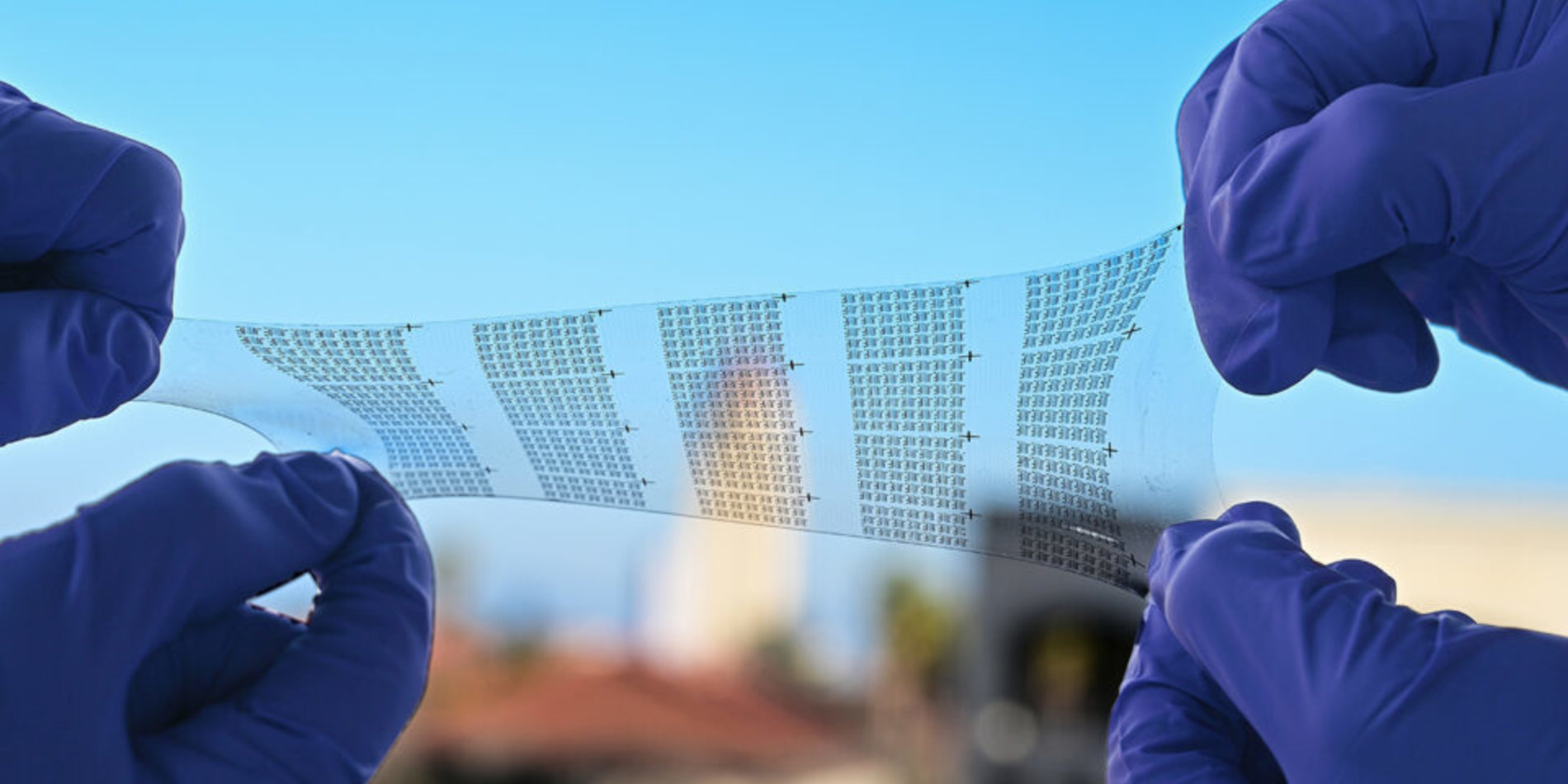An all-polymer display for on-skin electronics
Feature on Nature Reviews Materials, Stanford Engineering News, Daily Beast, Yahoo News, MSN, NewScientist, Popular Science, WebMD!
Stretchable displays that can interface with human skin have potential for wearable electronics and for the monitoring of health conditions. To date, most flexible displays are based on inorganic materials. Now, writing in Nature, Zhenan Bao and collaborators present an all-polymer light-emitting diode that can be stretched to 100% strain while preserving a high brightness and can be made into multicolour flexible displays.
“Imagine a display that can be stretched to twice its original length without tearing,” explains Zhitao Zhang, first author of the study. “In the near future, our mobile phone could be very thin and closely attached to our arm, like our skin, and this new kind of display would be integrated with skin sensors to allow us to observe real-time health parameters and communicate with others.” Thus far, stretchable light-emitting displays commonly involve the use of rigid inclusions such as quantum dots, light-emitting capacitors or perovskites in flexible matrices, and compromise device performance for stretchability. Light-emitting polymers are also good candidates for flexible opto electronics, but most conjugated poly mers cannot withstand high strains and suffer from charge trapping, which dramatically reduces optical performance and current efficiency.

To obtain the necessary combination of device performance and stretchability, the researchers used an emission layer made of nanoconfined light-emitting polymer inclusions embedded in a stretchable elastomer. As a starting point, they used SuperYellow (SY) as the light-emitting polymer and polyurethane (PU) as the flexible matrix material, and then extended the design strategy to other light- emitting polymers in the red (polyphenylene vinylene copolymer), green (spiro-copolymer) and blue (polyfluorene copolymer) regions.
Upon increasing the PU content of the blend, the light-emitting layer showed substantially improved stretchability and strain resistance, as expected. The inclusion of the elastomer reduces the overall elastic modulus of the film and helps the formation of a percolated SY network. Surprisingly, the charge transport and optical properties of the blend were also considerably better than those of the pristine light-emitting polymer. An increase of up to 260% in the photoluminescence quantum efficiency of SY upon the addition of PU was attributed to a decrease of the density of charge traps in the blend, which reduces non-radiative trap-assisted recombination.
By sandwiching the emission layer between a stretchable and transparent anode and cathode and adding an encapsulation layer, a working device was obtained. Energy level misalignment between the emission layer and the electrodes was overcome by the insertion of hole and electron injection and transport layers, ensuring high-performance operation at low operating voltages. The high-brightness device can be stretched to 100% strain and shows good stability upon cycling. Finally, the researchers designed a flexible wireless energy-harvesting system to power the device with a low voltage of 9 V.
As a demonstration, the researchers fabricated a skininterfacing stretchable display capable of blinking according to the frequency of heart pulsations. “To move this discovery closer to practical applications, better long-term stability and high patterning resolution are needed,” concludes Zhang. “We are also excited about the potential of this type of device for interactive 3D displays that can change shape depending on the displayed content.”


